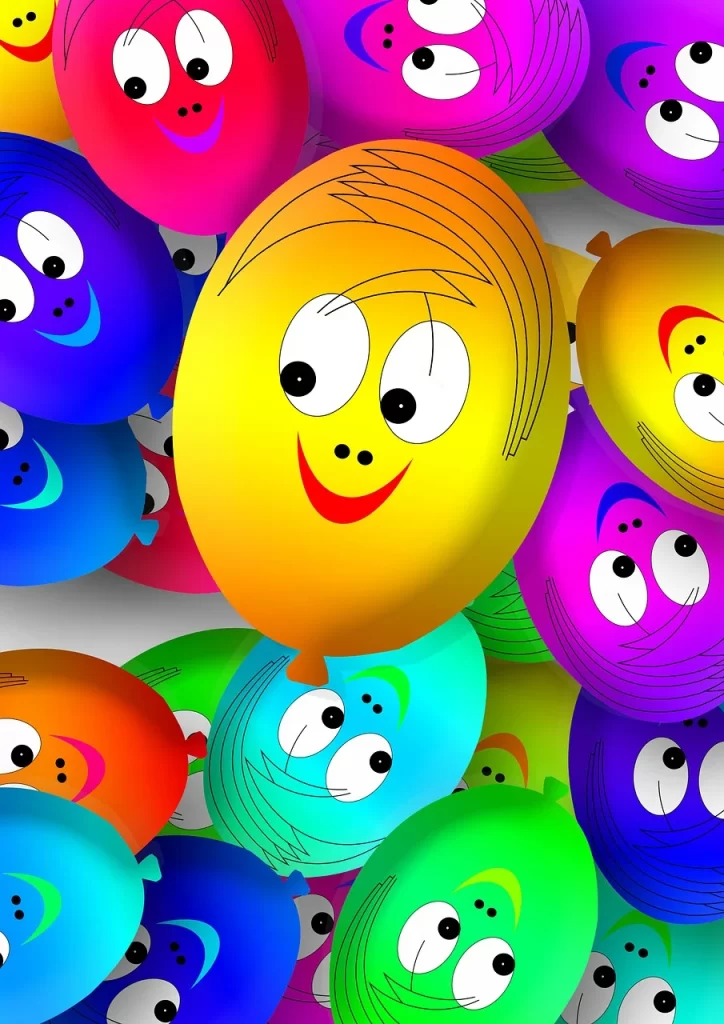Smile
A smile is a facial expression that typically involves the upward curving of the lips, often accompanied by the activation of various muscles in the face. It is a universal form of nonverbal communication that can convey a wide range of emotions, such as happiness, joy, friendliness, amusement, or even flirtation.
When we smile, it not only affects our facial muscles but also triggers a cascade of physiological responses. The act of smiling releases endorphins, dopamine, and serotonin in our brain, which are commonly associated with feelings of pleasure and happiness.
This means that smiling can boost our mood and make us feel better, both emotionally and physically. Smiles come in many different forms and intensities, each with their own unique meaning and context. They can be genuine, expressing true happiness or delight, or they can be more subtle and polite, used in social situations.
Smiles can also vary in duration, from a brief flash of expression to a more sustained and heartfelt beam. It’s important to note that smiles can be culturally influenced as well. What may be considered a friendly or positive expression in one culture might have a different interpretation in another.
Therefore, understanding cultural norms and context is essential when interpreting smiles. Overall, smiles are an essential part of human interaction, allowing us to connect, express positive emotions, and create a warm and inviting atmosphere.

Types of smile
1. The Duchenne Smile:
This smile is considered the gold standard of genuine expressions of joy. It involves the contraction of two key muscle groups: the zygomatic major muscles, which raise the corners of the mouth, and the orbicularis oculi muscles, which crinkle the eyes. The combination of these muscle movements creates a warm, authentic smile that reaches the eyes. It is often associated with feelings of happiness, pleasure, and true emotional connection.
2. The Polite Smile:
This smile is commonly used in social situations to acknowledge others without necessarily reflecting genuine happiness. It typically involves a slight upturn of the corners of the mouth, while the eyes may not be significantly involved. The polite smile is more of a social convention, used to maintain pleasant interactions and show courtesy. While it may not convey deep emotions, it still serves as a friendly gesture.
3. The Smirk:
The smirk is characterized by a lopsided grin, with one corner of the mouth raised higher than the other. It often conveys a mischievous or smug sentiment, indicating a hidden joke or secret satisfaction. The smirk can vary in intensity, from a subtle, playful expression to a more pronounced, self-assured smirk. Its meaning depends on the context and the relationship between the individuals involved.
4. The Contemptuous Smile:
This smile is associated with feelings of superiority, disdain, or judgment. It involves a slight raising of one corner of the mouth, often accompanied by narrowed eyes. The contemptuous smile can convey a sense of arrogance or superiority toward others. It is important to note that this type of smile may not necessarily reflect genuine happiness, but rather a negative attitude towards someone or something.
5. The Forced Smile:
Sometimes, we put on a smile to hide our true feelings. The forced smile appears artificial and lacks the genuine emotional connection found in a Duchenne smile. It typically involves a tight-lipped smile without much movement in the eyes. People may use a forced smile in situations where they feel obligated to appear happy or friendly, even when they don’t genuinely feel that way.
6. The Flirty Smile:
This smile is often used in romantic or flirtatious situations, expressing interest and attraction. It involves a soft, playful grin with slightly parted lips. Eye contact and subtle body language often accompany this type of smile, creating a sense of allure and charm. The flirty smile aims to convey interest and initiate or enhance a connection between individuals.
Conclusion
In conclusion, smiles are much more than just a facial expression. They are a universal form of nonverbal communication that can convey a wide range of emotions, from genuine happiness and joy to politeness and flirtation. Smiling not only affects our facial muscles but also triggers positive physiological responses in our brain, releasing feel-good chemicals that can boost our mood and well-being.
Different types of smiles, such as the genuine Duchenne smile, the polite smile, the smirk, the contemptuous smile, the forced smile, and the flirty smile, each hold their own unique meanings and contexts. Understanding these nuances can help us interpret and connect with others more effectively. It’s important to note that cultural norms and individual differences can influence the interpretation of smiles.
What may be considered a friendly smile in one culture might be perceived differently in another. Being aware of these cultural variations can help us navigate social interactions with sensitivity and understanding. Ultimately, smiles play a crucial role in human connection and creating a positive atmosphere.
So, let’s embrace the power of smiles and spread happiness wherever we go!
